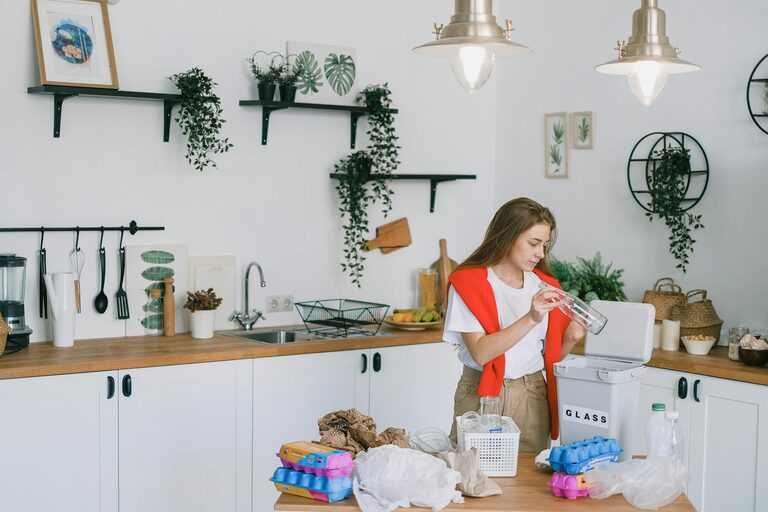Easy Tips and Tricks to Simplify Dinner Cleanup

Making dinner is often the highlight of the day, but the cleanup afterward can feel overwhelming. Whether it’s washing dishes, wiping counters, or putting away leftovers, tidying the kitchen after a meal can take a significant amount of time and energy. Fortunately, there are simple strategies that can help make dinner cleanup easier and more efficient. In this post, we’ll share practical ideas, smart habits, and helpful tools to simplify this routine chore.
1. Plan Ahead to Minimize Mess
One of the best ways to make cleanup easier is to plan your dinner in a way that reduces the mess created in the first place.
Choose Simple Recipes
Opt for meals that require fewer pots, pans, and utensils. One-pot dishes, sheet pan dinners, and slow cooker meals often mean fewer dishes to wash. For example, a stir-fry or pasta tossed with sauce can be cooked and served with minimal dirty cookware.
Prep Ingredients in Batches
Before you start cooking, organize and prep all ingredients. This avoids unnecessary trips back and forth, reducing spills or crumbs on your counter. Using prep bowls for chopped veggies or measured spices keeps your workspace tidy.
2. Clean As You Go
Cleaning as you cook is a game changer.
Wash or Rinse While Cooking
Whenever you have a free moment (such as while something is simmering or baking), rinse used utensils or wash small items. This breaks up the bulk of the cleanup and keeps your sink more manageable.
Wipe Surfaces Promptly
Keep a damp cloth or sponge handy and wipe spills immediately. Cleaning sauces or crumbs before they dry prevents tough scrubbing later. It also keeps your workspace inviting and safe.
Organize Used Tools Separately
Have separate containers or sections for dirty and clean items. This practice helps avoid confusion while cooking and simplifies putting things away afterward.
3. Use Tools That Simplify Cleanup
Certain kitchen tools and accessories are designed to reduce mess and streamline post-meal tidying.
Nonstick Cookware and Silicone Bakeware
Nonstick surfaces often require less scrubbing and can be easier to clean. Silicone mats or molds can replace parchment paper and are dishwasher safe.
Disposable or Reusable Liners
Using parchment paper, foil, or silicone liners on baking sheets and pans cuts down on residue buildup and makes washing faster.
Dish Racks and Drying Mats
A good drying system lets you clean items faster and avoids puddles or clutter on counters.
4. Make Dishwashing More Efficient
Getting dishes clean quickly means having a good system.
Pre-Soak Pots and Pans
Fill heavily soiled cookware with warm, soapy water right after use. This loosens food stuck on and greatly cuts down your scrubbing time.
Use the Right Cleaning Tools
Invest in good brushes, scrubbers, and sponges that can handle different types of mess, like greasy pans or delicate glassware.
Optimize Your Dishwasher Use
If you have a dishwasher, load it properly to maximize space and ensure thorough cleaning. Run it only when full to save water and energy.
5. Encourage Family Participation
Sharing the cleanup duties makes the job faster and teaches responsibility.
Assign Simple Tasks
Even young children can help by wiping tables, putting away leftovers, or rinsing dishes. Older kids can wash dishes or load the dishwasher.
Make It Fun
Turn cleanup into a game or play upbeat music to lighten the mood. Setting a timer and challenging everyone to finish before it goes off can motivate quick work.
6. Organize Your Kitchen for Easy Access
A well-organized kitchen helps keep things flowing smoothly during and after cooking.
Store Items Strategically
Keep frequently used utensils, pots, and plates within easy reach to prevent clutter and minimize movement around the kitchen.
Declutter Regularly
Removing unused gadgets or expired ingredients frees up space and reduces distractions during cleanup.
7. Establish a Cleanup Routine
A consistent routine helps build positive habits around cleaning after dinner.
Set a Time for Cleanup
Decide on a specific time to start tidying, such as immediately after eating or starting with clearing the table.
Follow a Step-by-Step Process
For example: clear the table, rinse dishes, wash or load dishwasher, wipe surfaces, take out trash, and put away leftovers.
Keep Cleaning Supplies Handy
Store dish soap, sponges, and towels near the sink for quick access and encourage immediate action.
Conclusion
Dinner cleanup doesn’t have to be a dreaded chore. With a bit of planning, smart habits, and help from family or tools, it can become a simple, even satisfying part of your evening. By choosing easy-to-clean recipes, washing as you go, organizing your kitchen, and establishing a routine, you can keep your kitchen sparkling with less effort. Try these ideas at your next dinner and enjoy the benefits of a cleaner kitchen and more free time.
Happy cooking—and cleaning!




